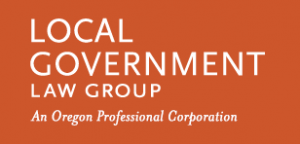Understanding OR-OSHA COVID-19 Temporary Rules
(Cover Your Face – But Keep Your Eyes and Ears Open)
Carrie Connelly
From our Spring 2021 e-newsletter
It’s been over a year that we’ve stayed COVID compliant – and while some of us might be ready to relax, we’re not yet out of the woods. Oregon Occupational Safety and Health Administration’s (OR-OSHA) Temporary COVID-19 Rules (OAR 437-001-0744) went into effect on November 16, 2020, and will remain in effect until May 4, 2021, unless earlier revised or repealed. A slightly modified “permanent rule” is in the works, with hearings to be held in the upcoming weeks. One proposed change omits the following deadlines that have passed.
Oregon OSHA is required to adopt OAR 437-001-0744 as a permanent rule. However, OSHA notes that, as its rule addresses the COVID-19 pandemic, it will repeal the rule once no longer necessary. That determination will be made in consultation with OSHA, OHA and other stakeholders.
Workplaces that provide emergency first responder services are deemed at “exceptional risk,” thus more and different requirements apply than in other workplaces. The rules and appendices are lengthy, thus beyond the scope of this article. Instead, the following described changes must be made to your public offices, if you are not yet in compliance.
1. Distance six feet, whether indoors or outdoors. Emergency medical service first responders, firefighters, and non-emergency medical transports are subject to more specific guidance that overrides this general rule, in the event of conflict. See, OAR 437-001-0744, Appendix A-17. For example, spacing requirements may not need to be followed on emergency response apparatus.
2. Continue to wear face coverings or personal protective equipment (PPE). This measure applies on all calls and in station break rooms, shared toilet facilities, or other common areas; but may be relaxed in living areas (if any), among residents. Emergency response vehicle drivers may also adjust or remove a mask that impedes vision or distracts from safe vehicle operation.
3. Clean and sanitize spaces occupied for less than 12 hours a day every 24 hours. Spaces occupied for more than 12 hours a day require cleaning every 8 hours. Emergency service providers must also: (1) develop procedures for routine cleaning and disinfection, as appropriate for healthcare settings; and (2) adhere to CDC guidelines for disinfection and sterilization in healthcare facilities.
4. Permanently post OR-OSHA’s “COVID-19 Hazards Poster” in a conspicuous location.
5. Conduct a COVID-19 Risk Assessment. Such action was required no later than December 7, 2020. Emergency service providers must record summary responses to thirteen COVID-19 exposure risk assessment questions, in writing.
6. Ventilate facilities with outside air circulated through existing heating ventilation and air conditioning systems. Such action was required no later than January 6, 2021, and by June 1, 2021, entities with more than 10 employees and an existing HVAC system must keep on file a written certification that the system is operating in accordance with OSHA’s rule. Thereafter, staff must regularly clean and maintain station air filters and minimize indoor air recirculation on a quarterly basis.
7. Establish and implement an Infection Control Plan. Such action was required by December 7, 2020. Plan controls include, but are not limited to, ventilation, staggered shifts, redesigned workplaces for physical distancing, reduced shared services and tools, limits on the number of employees (or other individuals) in workplaces, and provision of PPE. Station Plans must identify a knowledgeable person to administer the Plan, and be re-evaluated frequently to reflect needed changes, based on employee feedback and control assessments.
8. Inform and train employees on identified topics. Such action was required no later than December 21, 2020. Trainings should invite feedback, and must cover physical distancing, face coverings/PPE, sanitation, signs and symptoms of COVID-19, the entity’s infection notification process, medical removal procedures, basic risk factors, and modes of transmitting COVID-19. Training materials should be posted soon on OR-OSHA’s website.
9. Notify affected employees (within 24 hours) that had work-related contact with an individual who tested positive for COVID-19.
10. Cooperate with mandated COVID-19 testing and vaccinations that a local public health agency or OHA deem “necessary.”
11. Remove workers due to COVID-19, if recommended as a result of contact tracing identification.
If your entity has yet to comply with the above requirements, it’s not too late (even though some applicable timelines have passed.) Seek assistance when questions arise, and be prepared to obtain required resources. Coordinate with your legal team, as necessary.
